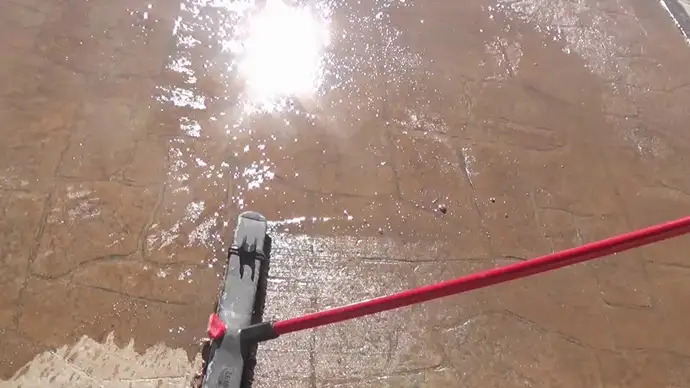Anyone who has ever had their concrete flooring sealed knows that the process can create some pretty powerful fumes. These fumes can be incredibly irritating and can even be harmful to your health if exposed to them for too long. The fumes are not only dangerous, but they can also make it hard to work in the area.
Sealer manufacturers typically recommend waiting between 48 to 72 hours before reentering a sealed space, but who has that much time? And what if you have pets or small children? Because of this, it’s imperative that you get rid of those fumes as quickly as possible.
So, how to get rid of concrete sealer fumes is the question on many a minds. Well-ventilated areas and fans are a great start, but you can also eliminate those unpleasant fumes in other ways. Continue reading for easy ways to remove concrete sealer fumes.
How to Get Rid of Concrete Sealer Fumes Fast?
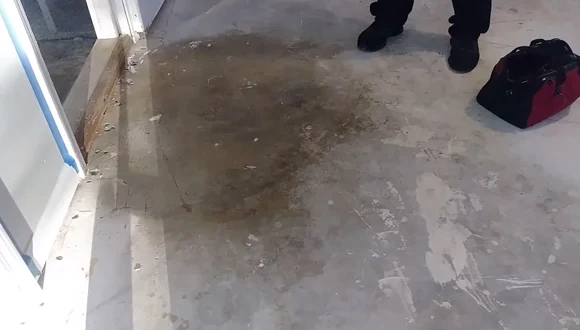
It’s not unusual for the smell of fresh concrete to linger around your home for days or even weeks after it’s been applied. If you’re looking for a way to get rid of the fumes fast, there are a few things you can try.
The following tips will help you remove concrete sealer fumes:
Create Proper Ventilation
If you’ve just applied a concrete sealer and the fumes are giving you a headache, the quickest way to get rid of them is to create ventilation. Open all the windows and doors in the area to let fresh air in. Turn on your fans if it’s windy outside to circulate the air.
Ensure cross-ventilation by placing a fan in the window that faces out and another inside the door that faces in. This will help to remove the fumes from the room quickly. It is also a good idea to use an exhaust fan to assist in the removal of the fumes from the house if one is available.
Check the Humidity of the Room
When you’re sealing concrete, it’s crucial to determine the room’s humidity before you start. If the room is too humid, it can cause the sealer to take longer to dry and cure. This will prolong the amount of time you’re dealing with the fumes. Applying a concrete sealant when the humidity is low is the best way to avoid this problem.
You can usually find out the humidity level by checking the weather forecast. If it’s going to be a humid day, wait until the evening when the humidity has had a chance to dissipate.
Use a Dehumidifier
If you’re looking for a quick way to eliminate the fumes, a dehumidifier can be your best friend. By removing moisture from the air, a dehumidifier will help to dissipate the fumes more quickly. When you run a dehumidifier in the room, you will speed up the drying process of the sealer and clear the air more quickly.
Dehumidifiers also keep the air dry, which can eliminate bad smells. Also, if you live in a humid climate, using a dehumidifier in your home can help to prevent the build-up of fumes. So when trying to get rid of fumes produced by a concrete sealer, you should use a dehumidifier.
Use the Right Amount of Sealer
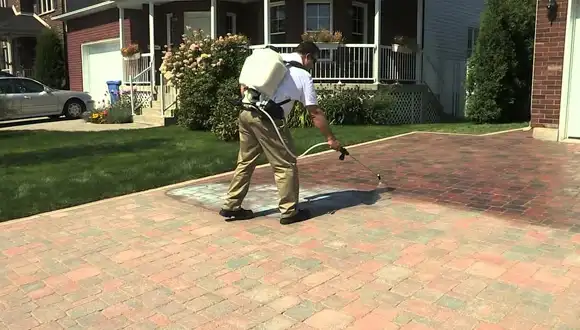
Using the right amount of concrete sealer is key to removing concrete sealer fumes. If too much sealer is used, the curing process will take longer than necessary, and the fumes will be more intense. On the other hand, if not enough sealer is used, the concrete will be more likely to absorb moisture and will take longer to cure.
The best way to ensure adequate sealer application is to follow the manufacturer’s instructions carefully. By doing so, you can minimize the amount of time that the fumes are present and get back to enjoying your newly sealed concrete as soon as possible.
Use the Right Method
When sealing your concrete floor, it is essential to use the right method to avoid strong fumes. The method you use can also impact how long the fumes last. If you apply the sealer with a brush or roller, the fumes will be much stronger than if you use a pump-up sprayer.
So, use the right method if you want concrete sealer fumes to disappear quickly. For example, if you’re using a brush or roller to apply the sealer, work in a well-ventilated area and open all the windows. If possible, seal the area off from the rest of your house so that the fumes don’t spread.
Let the Sealer Dry Completely
After you’ve applied the sealer and allowed it to dry, the fumes should dissipate quickly. Still, if you can still smell them, it’s likely that the sealer hasn’t had a chance to cure properly. In this case, you’ll need to wait until the sealer is completely dry before you can use the area again.
If you’re dealing with strong fumes, it’s best to wait until the sealer has had a chance to cure for at least 24 to 48 hours before using the area. Once the sealer is dry, the fumes should be gone, and you can enjoy your newly stained concrete floor.
What Causes Concrete Sealers to Fume?
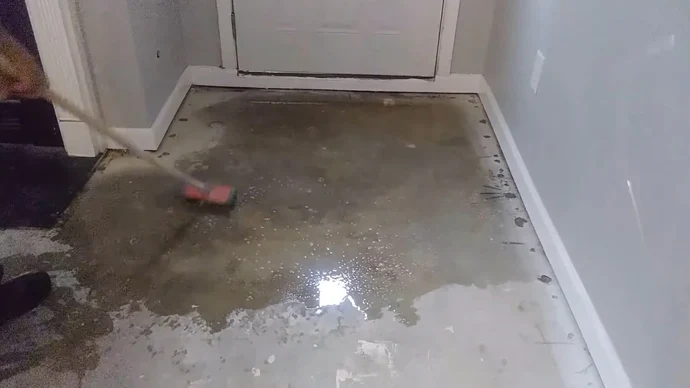
The fumes are caused by chemicals in the sealer that is released into the air when the solvent evaporates. There are a variety of different liquids that can be used in concrete sealers, and each one will produce its own unique fumes. For example, water-based sealers typically have very little odor, while solvent-based sealers can be quite strong.
So why do manufacturers use stinky solvents in their products? The simple answer is that they need to evaporate quickly so the sealer can dry and cure properly. Without evaporating the solvent quickly, the sealer would never fully cure and would be vulnerable to damage.
When you apply a concrete sealant, you’re essentially creating a barrier between the concrete and the outside world. This barrier is essential because it helps to protect the concrete from damage, stains, and other deterioration. To create this barrier, a sealer must first evaporate. It is possible that strong fumes were present during the sealing process due to the evaporation process.
A Similar Topic: Is it necessary to seal all grout types?
Is Concrete Sealer Fume Toxic to Breathe?
Yes, concrete sealer fumes can be toxic if inhaled. Concrete sealer is typically made from volatile organic compounds (VOCs), which can be hazardous to your health if inhaled. When you apply a sealer to the concrete surface, it releases VOCs into the air. These VOCs can cause various health problems, including irritation of the eyes, nose, and throat.
Also, headaches, nausea, loss of coordination, skin reactions, and liver-kidney damage can occur if you’re exposed to high levels of VOCs. So it’s essential to follow safety precautions when applying a concrete sealer, such as wearing a respirator and working in a well-ventilated area.
Here are some safety precautions you can take when working with a concrete sealer:
Wear a Respirator: Wearing a respirator is one of the most important safety precautions to take while working with concrete sealants. A respirator will protect your lungs from the harmful fumes emitted by the sealer. This is especially important if you’re working in an enclosed space.
Avoid Skin Contact: Anytime you work with a concrete sealer, it’s important to take precautions to avoid skin contact. The sealer’s chemicals can irritate the skin, and prolonged exposure can cause more serious health problems. If you get the sealer on your skin, wash it off immediately with soap and water.
Wear Protective Clothing: Using concrete sealers can be dangerous if you don’t take the proper precautions. Always wear protective clothing, including gloves and safety glasses. This will help protect your skin and eyes from harmful fumes.
Does Water-Based Concrete Sealer Fumes Breathable?
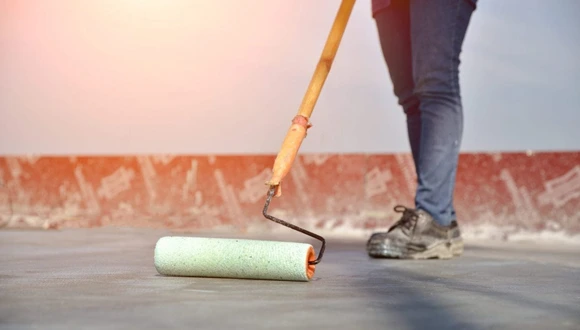
Water-based concrete sealers are more breathable than other sealing products, making them a good choice for indoor projects. They also have a low count of VOCs or volatile organic compounds. This means they’re less likely to cause health problems when used in enclosed spaces.
When choosing a water-based sealer, be sure to select one that is designed for the type of concrete you’re sealing. For example, some sealers are designed for stamped concrete, while others work best on smooth surfaces.
While it’s true that the fumes from concrete sealers that are water-based are less toxic than other sealers, it’s still important to take precautions when using them. But overall, they’re a safer option than their solvent-based counterparts.
Applying a water-based acrylic sealer is similar to any other type. There are a few things to keep in mind:
Difficult to Remove: Once a water-based sealer is applied, it’s difficult to remove. This is because the sealer soaks into the concrete rather than sitting on top of it. So if you’re not happy with the results, you may need to wait for the sealer to wear off over time.
The Right Temperature: You’ll need to apply a water-based sealer at the right temperature. Generally, the temperature should be between 50 and 90 degrees Fahrenheit. If it’s too cold, the sealer won’t adhere properly. And if it’s too hot, the sealer will dry too quickly and may not provide adequate protection.
Require Proper Care: Water-based sealers require more care than other types of sealers. They will freeze and become unusable much more easily than solvent-based sealers. So if you’re planning to store your sealer for any length of time, be sure to keep it in a cool, dry place.
Is It Smelly to Cure Concrete Sealers?
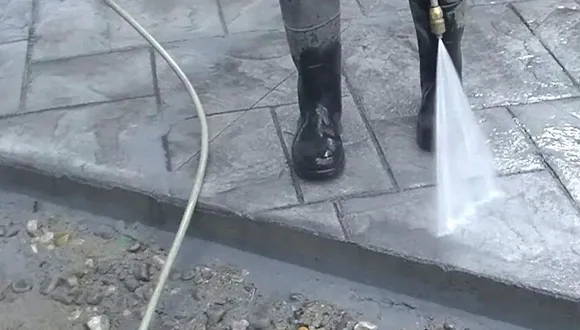
Yes, curing concrete sealers can be smelly. The concrete sealer contains a liquid that evaporates as the sealer dries. This process is known as curing. When the liquid evaporates, it leaves behind a solid layer that protects the concrete from deterioration.
The evaporation of the liquid sealer is necessary for the sealer to properly cure and form a solid protective layer on the concrete. So, while you may not enjoy the odor of a curing concrete sealer, it is a good sign that the product is working properly. Also, the odor will dissipate over time as the sealer cures completely.
Is Concrete Sealer Fumes Safe for Pets?
It depends on the type of sealer you’re using. If you have pets, you probably want to know if the products you are using in your home are safe for them. Concrete sealer fumes are a common source of concern for pet owners.
Water-based sealers are generally considered safe for pets. Sealers made of solvents can be dangerous, particularly if your pet inhales the fumes. If you’re using a solvent-based sealer, keep your pets away from the area while working until the sealer has had time to dry completely.
Now that you know more about how to get rid of concrete sealer fumes, you can decide which type of sealer is right for your project. And you can take steps to protect yourself and your pets from harmful fumes.
Topics of Relevance:
- Do I need to use multiple coats of concrete sealer?
- Is Exposed Aggregate Concrete Sealer long-lasting?
- What to look for when choosing a roller for concrete sealer?
- Is it possible to seal my basement on my own?
